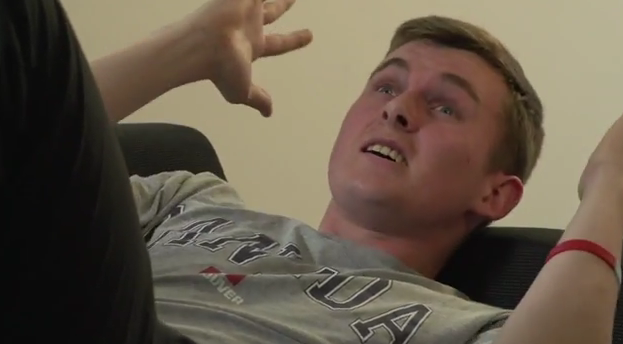Sensory Stimulation and Sensory Reinforcement
The term ‘sensory stimulation’ refers to the sensations that an individual might hear, see or feel in response to particular behaviours. This sensory stimulation may explain the development and maintenance of some forms of self-injurious behaviour.
The primarily focus on this page is self-injurious behaviour related to sensory stimulation and sensory reinforcement. This is because we think that when sensory reinforcement and sensory stimulation is the cause of behaviours that challenge, it is most likely to influence self-injurious behaviour.
Sensory stimulation/reinforcement
Some individuals may engage in self-injurious or other behaviours that challenge, particularly stereotyped behaviours, because the immediate sensory or perceptual consequences (seeing, hearing and feeling) of the behaviour are experienced as pleasant. If the consequences are pleasant the individual is more likely to show these behaviours again in the future so that they can have the experience again. You can watch a short clip of role play actors at the top of the page that gives an example of this.
There are many different forms of behaviour that may provide sensory reinforcement. Many individuals eye press because it produces visual patterns. Physically pressing the eye will cause cells (called rods and cones) to ‘fire off’ nerve impulses and the individual will see flashes of light. This type of sensation may be rewarding for some people, and so they will do it often to get the same sensation.
It is not surprising that when someone discovers this way of producing a pleasant sensation, they will reproduce it over long periods of time.
Other forms of sensory reinforcement might include face slapping which produces temporary tingling in the face and pressing and banging the ears can result in “pleasant” noises.
The presence of peripheral sensory neuropathy may also increase the likelihood of someone showing self-injurious behaviour for the purpose of self-stimulation. In addition to the dampened sensation of pain, individuals with peripheral sensory neuropathy may experience different or unusual sensory responses to physical stimulation, particularly in the hands, fingers and feet.
It is also useful to think of pain and discomfort as a form of sensory reinforcement. In this case the individual does not receive something positive after the behaviour but experiences the removal of something unpleasant. The best example is scratching an itch.




